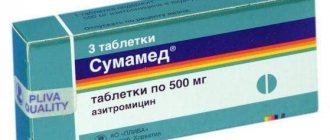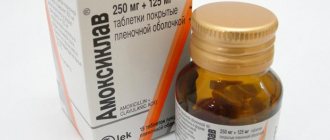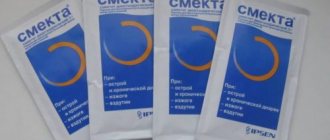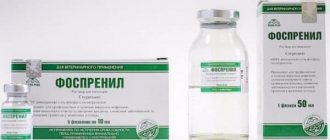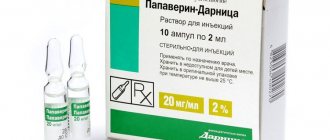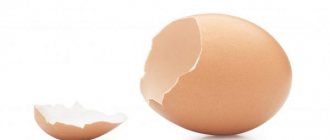Glucose for cats is prescribed in the treatment of various diseases and intoxication syndrome. It helps to support the weakened body of the animal during the period of illness and until complete recovery. When using the drug, it is important to follow the instructions for use from the manufacturer, which are included in each package, in order to maximally protect your pet from unwanted reactions. Glucose is usually given by injection. The procedure can be performed either by a veterinarian or the cat's owner at home.
General characteristics
Glucose injection (Glucosi Solutio proinjectionibus) is a clear or pale yellow liquid that is placed in a glass vial or bottle. To ensure the tightness of the contents, a rubber stopper is used, which is reinforced with a metal cap. The bottle is accompanied by instructions from the manufacturer, which describe in detail its contents, method of use, expiration dates and GOSTs. The bottle with liquid is stored at above-zero temperatures up to 25C in a dark place, protected from excess moisture. Shelf life – 2 years.
The active ingredient of the drug is crystalline medical or hydrated glucose. Auxiliary elements are sodium chloride, water for injection.
They produce 5%, 10, 25 and 40% medicinal products, in which the active substance content is 5, 10, 25 and 40 g per 100 ml, respectively.
The market offers a wide variety of Russian and foreign-made drugs. The drug from the Voronezh pharmacological organization is quite popular. The developer produces an injection solution with different percentages of the active substance and varying volumes (from 10 to 500 ml). It can be used in the treatment of cats, dogs and other domestic animals, as well as large and small livestock.
Important! Before using the drug, consultation with a specialist is necessary. The description below is for informational purposes only and cannot be used for independent prescription and dosage determination.
Contraindications
The solution is not used in animals that have individual intolerance to the components of the drug or diabetes mellitus.
Despite the fact that no overdose symptoms have been recorded in animals, you should not exceed the dose of the drug indicated by your doctor.
The solution is a fairly inexpensive drug. Its price will depend on the volume of the bottle, the concentration of the active substance, and the financial policy of the manufacturer.
On average, the cost for a 100 ml bottle is 50 rubles.
Operating principle
In veterinary medicine, isotonic and hypertonic glucose solutions are used. For cats, one of these types may be used depending on the condition of the animal.
The isotonic solution has a concentration of active substance of 5%. It is an easily digestible source of nutrition aimed at providing the animal’s body with the required energy. Glucose injection accelerates the removal of toxins, improves metabolism, and restores water balance.
A hypertonic solution contains 10, 25 and 40% of the main element. It plays an important role in improving the filtration properties of the liver and normalizes heart function. It has a beneficial effect on blood vessels and normalizes blood pressure. The drug helps to enhance the synthesis of hormones and enzymes in a weakened body, which increases its resistance to the disease.
Instructions for use with dosages for adult cats and kittens
The dosage for cats depends on the condition, age, body weight and can vary from 5 to 50 ml per day. When administering a large volume of solution (more than 10 ml), the dose should be divided into several portions and injected into different areas of the skin. A printed bottle of medicine remains usable for 6 hours.
For some diseases, the doctor prescribes several different medications. Is it possible to combine glucose and other medications in one syringe? Unfortunately, this is not always acceptable. The glucose solution contains a stabilizing component (hydrochloric acid) and therefore has a low pH of 3.0-4.0.
When mixing glucose with drugs that have an alkaline reaction, an undesirable interaction may occur, as a result of which the active substances are destroyed and new compounds appear. Glucose cannot be combined with drugs such as:
- aminophylline;
- ascorbic acid;
- some antibiotics;
- antifungal agents;
- cardiac drugs.
Indications for use
Glucosi is used as an auxiliary drug, which is aimed at maintaining the strength of the animal’s body during illness. It can also be used to dilute other medications.
The most common reasons for use in cats are:
- severe intoxication (food poisoning, chemical poisoning, inflammatory diseases, etc.);
- replenishment of fluid loss;
- bleeding;
- shock phenomena;
- infectious diseases;
- liver dysfunction;
- pathologies and diseases of the digestive system.
Important! The dosage of glucose for cats and the duration of use should be strictly prescribed by the treating veterinarian. Do-it-yourself activities can harm your pet’s health!
Glucose solution 40% (Agrofarm)
Ingredients: glucose, water for injection. Packaging: bottle, 100 ml. Storage conditions: at t from 0 0C to 25 0C. Shelf life: 2 years. Directions for use: The drug is used for toxic infections, various intoxications, liver diseases, pulmonary edema and gangrene, cardiac decompensation, gastrointestinal diseases with symptoms of intoxication, hypotension, atony of the proventriculus in ruminants, acetonemia, postpartum hemoglobinuria, ketonuria and toxemia in cows , ketonuria in sheep, the drug is a component of various blood substitutes, anti-shock and rehydration fluids, a solvent for drugs when administered intravenously in order to weaken their toxic effects. Glucose solution is prescribed to weak and emaciated animals as an energy and dietary supplement. Directions for use: injection. INSTRUCTIONS for the use of Glucose Solution 5%, 10%, 25% and 40% in veterinary medicine 1. GENERAL INFORMATION 1.1. Glucose solution 5%, 10%, 25% and 40% is a preparation that is a clear, colorless or slightly yellowish liquid. 1.2. The drug is packaged in 100, 200, 250, 400, 500 ml bottles in sterile neutral glass bottles, sealed with rubber stoppers and rolled aluminum caps. Each package is labeled in accordance with regulatory documentation and provided with instructions for use. Other packaging is allowed, agreed upon in accordance with the established procedure. 1.3. The drug is stored in a dry place, protected from light, at a temperature from 0 0C to 25 0C. The shelf life of the drug is 2 years from the date of manufacture. 2. PHARMACOLOGICAL PROPERTIES 2.1. For veterinary purposes, isotonic (5%) and hypertonic (10-40%) glucose solutions are used. 2.2. When hypertonic glucose solutions are injected into a vein, the osmotic pressure of the blood increases, the flow of fluid from tissues into the blood increases, metabolic processes increase, the antitoxic function of the liver and heart function improve, blood vessels dilate, and diuresis increases. Glucose stimulates the synthesis of hormones and enzymes in the body of animals, increases the body's defenses. 2.2. Isotonic glucose solutions are taken to replenish the body with fluid and easily digestible valuable nutritional material. In tissues, glucose breaks down with the release of energy, which serves to carry out the body's power function. 3. PROCEDURE FOR APPLICATION OF THE DRUG 3.1. Glucose solutions of 5%, 10%, 25% and 40% are used for toxic infections, various intoxications (poisoning with mercury, arsenic, hydrocyanic acid and its salts, carbon monoxide and other substances), liver diseases (hepatitis, cirrhosis), edema and gangrene lungs, cardiac decompensation. Glucose solutions of 5%, 10%, 25% and 40% are prescribed for gastrointestinal diseases with symptoms of intoxication, hypotension, atony of the proventriculus in ruminants, acetonemia, postpartum hemoglobinuria, ketonuria and toxemia in cows, ketonuria in sheep. The drug is a component of various blood substitutes, anti-shock and rehydration fluids, a solvent for drugs when administered intravenously in order to weaken their toxic effects. Glucose solutions are prescribed to weak and emaciated animals as an energy and dietary supplement. 3.2. Depending on the severity of the disease, the drug is administered to animals orally or intravenously 1-2 times a day in the following doses (in ml per animal):
3.3. The dose volume and timing of application depend on the weight of the animal and the course of the disease. 3.4. Glucose solutions of 5%, 10%, 25% and 40% in recommended doses do not cause side effects or complications in animals. 3.5. There are no contraindications to the use of the drug. 4. PRECAUTIONS 4.1. When working with the drug, you should follow the general rules for working with veterinary drugs. With the entry into force of this Manual, the Manual on the use of glucose solution 5, 10, 25, 40% in veterinary medicine, approved by the Department of Veterinary Medicine of the Ministry of Agriculture of Russia on June 2, 1995. The Manual on the use of glucose solution 5%, 10%, 25% and 40% developed by CJSC NPP "Agropharm". Approved by the Council on Veterinary Drugs of the Veterinary Department of the Ministry of Agriculture of the Russian Federation (protocol No. 4 of October 11, 1994).
Mode of application
The dose of glucose for cats is determined strictly individually. It is calculated depending on the weight of the animal, the concentration of the active substance, and the type of disease. The approximate dosage is:
- 5-50 ml for a 5 percent solution;
- 5-20 ml for 40 percent.
The drug is usually prescribed 2-4 times a day.
The drug can be administered subcutaneously or intravenously. A solution with a concentration of the active substance of 40% is administered only intravenously.
It is highly recommended not to skip the administration of the drug according to the schedule prescribed by the doctor. If this happens, then treatment is continued as soon as possible and in the same dosage as indicated by the veterinarian.
Is it possible to overdose?
If you follow the dose prescribed by the veterinarian and give it by mouth or give the injection intramuscularly correctly, then this phenomenon will not be observed. When owners begin to give their pet water or give injections on their own, the risks of overdose are high. If the solution is used excessively, the animal's blood and urine sugar levels increase. An incorrectly selected dose of glucose can lead to an imbalance of electrolytes and the accumulation of large amounts of fluid in the cat's body. If unpleasant symptoms continue for several days, then your pet should be taken to the veterinarian. In such cases, the medication is discontinued and insulin is prescribed or saline infusion is performed.
Performing an injection
You should check with your veterinarian about how to inject glucose into your cat. Subcutaneous injections are usually performed in the withers (adult animals) or in the upper part of the hind leg (kittens).
To carry out the procedure safely, you should adhere to the general rules for working with the drug:
- It is recommended to perform the procedure with gloves;
- Before and after the procedure, you should wash your hands thoroughly with soap;
- do not drink alcohol or smoke during the event;
- Do not take medications orally that are intended for injection.
Immediately before the injection, you should prepare everything necessary for the procedure so as not to be distracted during its implementation:
- Place a packaged syringe, a glucose solution of the required concentration, and additional medications if they were prescribed by a doctor on a hard surface.
- Open the syringe and draw the required amount of solution (mix the medications according to the prescription indicated by the doctor), release excess air from the syringe.
- Call the animal, put it on the table and secure it well (here you will need the help of someone close to you).
The injection itself is performed as follows:
- With your non-working hand (for right-handers - the left, for left-handers - the right) take the cat by the withers and slightly push the skin upward.
- Using your working hand (for right-handers - the right, for left-handers - the left), take the syringe and insert the needle into the withers no more than a third. The needle should be parallel to the surface on which the cat is located.
- Slightly loosen the grip on the skin and inject the medicine. An indicator of the correct execution of the manipulation is dry hair at the injection site. If the fur gets wet, it means the medicine has not entered the body and the procedure must be repeated.
- Smoothly pull out the needle, release the withers completely and massage a little.
The more confident and smooth the movements of the person giving the injection, the more painless the procedure will be for the cat.
Price
The solution is a fairly inexpensive drug. Its price will depend on the volume of the bottle, the concentration of the active substance, and the financial policy of the manufacturer.
On average, the cost for a 100 ml bottle is 50 rubles.
Home » Diseases » Glucose for animals instructions for use. Glucose for cats dosage
In the section on the question Question for veterinarians and knowledgeable people. What physical the solution is more nutritious than glucose (subcutaneously for a cat). asked by the author Outgrowth, the best answer is Subcutaneous injections with a nutrient solution for dehydration of the bodyLeonid Filippov For subcutaneous feeding with saline solution (or better Ringer-Locke solution from a human pharmacy), draw 10 cubes of saline solution into a 20-cc syringe.
There is also a 2% solution of Glucose in saline (also sold in human pharmacies) 2 cubes. If the cat is still dying of hunger, exhausted, then you can add five cubes of Glucose in saline a couple of times, nothing. In the same syringe - ONE type of vitamins. If it is an enteroinfection or the like, the most important vitamin is to alternate between B12, B6 and ascorbic acid.
The dose of vitamins is a quarter of a one-cubic ampoule. If you inject B12 (200 IU per ampoule), then take half an ampoule. If B12 (500 IU per ampoule) is a quarter of the ampoule. And it’s good to add cocarboxylase as the fourth component. I repeat, for each injection - one vitamin. Having collected all this into a syringe, chat, close the needle tightly with a cap and heat the syringe under running warm water until approximately 40 oC.
Then wipe and replace the needle with a needle from an insulin syringe. Using three fingers (thumb, index and middle) of the left hand, pull the cat’s skin so that the index finger is between her shoulder blades. A sort of hump-hood is formed with a fold under the index finger. Wipe thoroughly with alcohol.
Make sure that there is free space under the skin (as if there is air in it), press slightly on the syringe plunger so that the medicine splashes out just a little. Insert the needle into this space - be sure to make sure that its tip is UNDER the skin, and not IN skin. Inject the medicine (all 12-18 cubes) in a row - slowly - into this subcutaneous space.
It should be EASY to walk, as if in the air. If it doesn’t go, then the needle is in the skin! A soft swelling will form on the back of the neck for a short time - this is normal and completely painless for the cat. It will dissolve before our eyes, and the animal will immediately feel a little better. If the cat does not drink for a day or more, it should be injected once every three to four hours until the cat begins to pee profusely.
After this - at least three times a day - until she recovers and starts drinking on her own. ATTENTION! This is not a treatment for the underlying disease, but support for water-salt balance! I know of cases where people in extreme situations boiled ordinary tap water for a long time with table salt dissolved in it (saline solution - 0.9% NaCl) and glucose from tablets - and saved the animal’s life.
Even if the cat cannot eat food or is not allowed to do this, it NEEDS subcutaneous injections! (((). We gave an injection of no-shpa intramuscularly and an enema (butterfly syringe) with glycerin, the stool began to pass perfectly.
It is also good to relieve constipation in cats with Duphalac; cats themselves can lick it off and a teaspoon is enough. so that after 2-5 hours, soft stools begin to pass (not diarrhea). And you can give baby food in jars (meat puree), it is not greasy and is absorbed well. Good luck to you in the future and may there be competent veterinarians!
Intramuscular injection for a dog
Can you give your dog an injection yourself? This is usually what the doctor asks before making a prescription. No! “This is not for me, I’m afraid,” the owner of the animal answers with fear in his eyes, while others, on the contrary, can install an IV on their own.
Let's, together with those who don't know how, learn how to properly give an injection to a dog, this skill will help you cure your pet faster and you will also save money on calling a veterinarian.
What are we going to inject with?
Today at any pharmacy you can buy disposable syringes of different sizes, which will make it easy to give an injection. Take the appropriate syringe depending on the size of the animal and the dose of the drug.
In this photo you see an ordinary plastic two-room apartment. In blue, I marked the volume as 1 ml or 1 cube (cm 3), and in red as 0.4 ml.
Disposable syringe “kopeck piece”
But on this five, the volume is also marked in blue as 1 ml, and in red as 0.4 ml.
Disposable syringe “five”
Be careful, people often get confused between syringes. In the first case, in order to inject 0.4 ml, we mark 4 divisions, and in the second, for the same volume, we need to mark 2 divisions. I don't want to be boring, but this is important. Nothing bad will happen if you make a mistake when injecting saline or vitamins, but you can’t make a mistake with antibiotics or hormones.
Perhaps the most popular types of syringes are: kopeck and five, but they also use huge ones - the Janet syringe (150 ml, this was how Morgunov was vaccinated against foot and mouth disease in the film "Prisoner of the Caucasus") and very small ones - insulin. The size depends on the dose and properties of the drug, I do not recommend injecting oily and viscous solutions with insulin or kopeck piece, of course you can, but you yourself will suffer and torture the animal.
Even small breeds can use a regular two-cc syringe, but I feel sorry for the dog, so they inject it with a thin insulin needle. But it’s better to endure one injection from a thick needle than to inject a viscous substance through insulin for a long time. Yes, it can be used for non-concentrated solutions, but not for viscous ones.
We suggest you read: Liver diseases in cats: symptoms and treatment
How will we inject
Before properly injecting your dog, you need to prepare the injected solution and needles. It is important that you bring the medications to the animal’s body temperature.
Well, as a last resort, warm them up in your hand, or better yet, put them in warm water, but you don’t need to overheat, 37-39 0 C is enough. Then the dog won’t be in pain and it will tolerate the injection easier, especially this rule must be observed when you inject a large volume of liquid.
Another important point, pay attention to this photo.
Antibiotic bottle
It shows a regular bottle of antibiotics, sealed with a rubber stopper. When you use these bottles, after puncture, replace the needle with a new one. Of course, this is not necessary, but it is advisable, because the needle becomes very dull from the cork and can become clogged with a piece of rubber. And when you poke an animal with a blunt needle, it will naturally hurt, the dog will whine, and you will panic.
You will not have a question about how to properly give an injection to a dog if you think through everything and prepare in advance; it is also important to have peace of mind during the procedure and behave confidently. Your pet senses when the owner is nervous and the fear will transfer to him.
There are several types of ampoules, most of them open without filing, such ampoules are marked with a white belt or a colored dot, marked with a red arrow in the photo.
Sometimes such marks seem to be placed for beauty and the glass still needs to be filed down. The undercut can be made using a special disk, which is placed in the package with the drug, or a file, needle file, nail file, on the corner of a sharpening stone, and then you can figure it out yourself.
When breaking off glass, protect your fingers with a piece of cotton wool or syringe packaging, I usually use packaging. Be sure to do this so as not to injure your hands; sometimes the ampoule may burst in your hands, especially when you are in a hurry, which often happens in emergency situations, for example.
It happens that there is more drug in an ampoule than you need for one injection, so in order to save money, you can put all the substance into a syringe and use it within 3-4 days. Remove air from the syringe and store in a cool, dark place, preferably a refrigerator. When you give an injection, change the needle and inject the desired dose.
We draw the required dose from a larger syringe into a smaller one
Now, after a long but necessary preparation, let’s move on to the main thing - how to properly inject a dog.
The main thing is to take your time, lay the dog on its side so that it relaxes the muscles, feel the back of the thigh, find where the bone is located - there is no need to prick there. And you need to insert the needle approximately into the middle of the thigh, where you will find the most muscles. This photo shows the injection site, click on the photo to enlarge.
Intramuscular injection site
There are many tricks and techniques regarding how to hold a syringe; you can use different ones, but the main thing is that after inserting the needle you feel comfortable pressing the plunger. When the needle is sticking out in the butt, there is no need to turn the syringe around to better see the scale or turn it from side to side.
Take the syringe at the base of the needle and firmly insert the needle, then grab and press the plunger. The depth to which you need to inject depends on the size of the dog, for small ones (up to 10 kg) by 0.5-1.5 cm, and for large ones you can inject up to 3 cm.
The rate of introduction of solutions depends on its quantity and density, on average it is 1 ml in 2 seconds. After the injection is made, remove the syringe at the same angle as you injected, also confidently and cheerfully. Hold the skin with your free hand, and then massage the injection site, it will not hurt so much and, by massaging, you will shift the layers of tissue so that the drug does not flow out through the puncture.
Now let’s figure out how to properly inject a dog subcutaneously or in the withers area. This is the easiest way to administer fluids, but it has some limitations. It is not advisable to administer concentrated drugs - it will hurt, and then swelling and other complications will appear. For example, seemingly harmless glucose, which many people like to inject so that the dog does not die of hunger, is released in different forms. Or rather, different concentrations: 40% and 5%, so a 5% solution can be administered subcutaneously, but a 40% solution can only be administered intravenously.
Recently, an acquaintance unknowingly injected his dog into the withers area with 10 ml of 40% glucose, the poor dog literally peed itself. I don’t want to scare you, but I want you to be careful and know how to properly inject your dog.
Owner reviews
Andrey:
“The cat was diagnosed with acute gastroenteritis. They prescribed a course of certain medications and glucose. Basic medications were administered directly from the vet, and at home I injected my own glucose. The cat’s illness did not linger; she gradually began to eat and drink on her own, after which the medications were discontinued. The question arose when the solution for veterinary purposes ran out and I had to buy a regular (human) one. It turns out that it can also be injected into animals, but it is advisable to still use a veterinary one.”
Maria:
“A kitten strayed to us and we decided to keep it. However, he turned out to be sick, did not eat, did not drink, was lethargic, vomited, and lay motionless. They took him to the veterinarian, where they took blood tests - it turned out to be a bacterial infection. An antibiotic and glucose injections were prescribed. Getting the kitten out turned out to be difficult, but we did it. Glucose helped very well to support the animal, since he could not eat anything and even vomited from water. Now everything is all right".
TECHNIQUES AND WAYS OF ADMINISTRATION OF MEDICINES TO ANIMALS
When treating animals, parenteral administration of medicinal substances is of great importance, which is carried out in compliance with the rules of asepsis and antisepsis.
The hair at the injection site is cut off, the skin is wiped with alcohol or tincture of iodine. Syringes and needles are sterilized for 10 - 15 minutes in distilled or boiled water. Used needles are cleaned with a mandrin, washed with water and then with alcohol-ether and dried, and the syringes are washed with hot or soapy water, disassembled and wiped, and stored disassembled. Before use, syringes and needles are sterilized,
pre-wrapped in gauze.
Before administration, it is necessary to check the quality of the solution (color, transparency, temperature, which should be 38-40°) characteristic of this medicinal substance. When introducing the solution, do not allow air bubbles to enter. Carefully monitor the animal's reaction during the period of administration of the solution; if changes occur in the condition of the sick animal, the administration must be stopped.
Before administering medicinal solutions, wash and disinfect hands. The syringe is filled with a medicinal solution, the needle is lifted up and air bubbles are forced out of the syringe and needle with a slight movement of the piston.
3.1. Intradermal and subcutaneous injections. Intradermal injection
The most superficial of injections. For diagnostic purposes, 0.1 to 1 ml of liquid is administered.
Preparation for the procedure
1.Draw the required dose of the drug into the syringe.
2. Wash your hands.
3. Wear gloves.
4. Treat the injection site with a skin antiseptic, making strokes in one direction.
5.Tighten the skin at the injection site.
6.Insert only the end of the needle into the skin, pressing it to the skin and, without ceasing to stretch the skin, move the first finger of your right hand onto the piston and, pressing it on the piston, inject the drug.
7. Remove the needle without pressing the injection site with cotton wool.
8. Remove gloves, wash hands.
In large animals, subcutaneous
injections of solutions are carried out in the middle third of the neck. behind the shoulder blade and in the dewlap area. Before insertion, the syringe is fixed in the right hand; Hold the cylinder firmly with your thumb, middle and ring fingers, press the needle with your little finger, and press the piston rod with your index finger. Then, with the thumb, index and middle fingers of the left hand, the fold of skin is pulled back and a needle is inserted into the resulting depression at an angle of 45°. After making sure that the needle is under the skin, apply pressure to the syringe plunger. At the end of the injection, the needle is removed, the puncture site is disinfected and lightly massaged. When administering drugs subcutaneously, the following rules must be observed:
We recommend reading: Variety of 2-3mm Worms in Cats
1) the needle is inserted into the skin at an acute angle, and its oval hole should always be beveled outward. If the hole is directed towards the skin, the needle can act like a punch, dragging along layers of epithelial cells along with pathogenic microorganisms, which sometimes explains cases of suppuration after subcutaneous injection;
2) the direction of the puncture must coincide with the longitudinal axis of the syringe and the needle so that the needle cannot break;
3) the needle should not be pressed against the skin before puncturing, but should pierce the skin with a slight push. The sooner the puncture is made, the more painless it is;
4) it is better to clean the skin with alcohol or ether.
Working animals should not be given injections in the areas where the harness is attached.
Rice. 11. Subcutaneous injections for dogs
In small animals, injections are made on the right and left sides of the neck, on the chest wall, on the inner thigh and lower abdominal wall.
In pigs, solutions are injected near the base of the auricle, into the knee fold, the inner surface of the thigh and the lower surface of the abdominal wall; in birds - in the chest, the back of the head and the tip of the wing.
Theoretically, the skin covers the entire body and an injection can be made under the skin anywhere. Historically, the withers (between the shoulder blades, above the front legs) and the knee crease area (on the side of the knee) are considered more convenient and safe places for injections, as shown in the figure and photo; other places on the body can be used without compromising safety . If you accidentally introduce an infection into the tissue, it is easier and faster to treat an abscess on the side than on the withers. It is better to inject painful drugs into the withers, since it is less sensitive, as it is prepared by nature and evolution for defense and fights. Remember that the skin at the withers is denser and thicker; some needles can simply be bent. To avoid bending the needle, do not rush to inject the needle too quickly; if you feel a lot of resistance from the skin, inject a little more slowly. Currently, microchipping is being used more and more among pets; the chip is inserted on the left side of the neck; it is better not to use this injection site.
Rice. 12. Subcutaneous injections for cats
· Lubricate with alcohol, etc. no need for skin
. Animals have a strong antibacterial layer on their skin.
· The main thing is not to touch the needle with your hands.
· The drug should be at room temperature, or preferably body temperature (37-39 degrees Celsius)
· When injecting under the skin, there is less chance of getting into the “wrong place”.
· The syringe must be in the correct direction when injecting.
Pull the fold of skin to the top and to the base of the fold, using your fingers, at an angle of 45 degrees, insert the needle no deeper than the subcutaneous space. As you move the needle through the skin, you will feel resistance to its movement. As soon as the needle “falls” (resistance stops), it means it is under the skin, you can press on the piston and release the medicine. It is important not to pierce the fold and not inject yourself or simply pour the drug out on the other side. In the diagram: the places for subcutaneous injections in dogs are indicated in blue.
| Rice. 13. Areas where subcutaneous injection can be made are marked in blue. |
Injection of large quantities of solutions under the skin is carried out slowly with light massage of the injection site. Up to 200-300 ml can be injected into one place from a Bobrov apparatus or a Janet syringe.
| Rice. 14. Subcutaneous injections |
3.2. Intramuscular injections.
To inject solutions into the muscles, you need to take a strong, sharply beveled needle. The needle is injected without a syringe, perpendicular to the surface of the skin, to a depth of 2-4 cm. Large muscle groups are usually selected for injecting solutions, avoiding the location of large vessels, nerves, tendon sheaths, joints and bones.
Remember! The skin where the needle enters must be healthy!
· The drug should be at room temperature, or preferably body temperature (37-39 degrees Celsius)


